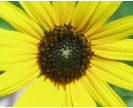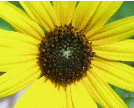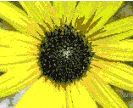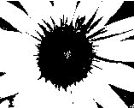Any image that is to be archived for future use requires specific storage considerations. However, the choice of file format is diverse, offering advantages and disadvantages that make them better suited to a specific environment. When digitising images a standards-based and best practice approach should be taken, using images that are appropriate to the medium they are used within. For disseminating the work to others, a multi-tier approach is necessary, to enable the storing of a preservation and dissemination copy. This document will discuss the formats available, highlighting the different compression types, advantages and limitations of raster images.
When creating raster-based images for distribution file size is the primary consideration. As a general rule, the storage requirements increase in proportion to the improvement in image quality. A side effect of this process is that network delivery speed is halved, limiting the amount that can be delivered to the user. For Internet delivery it is advised that designers provide a small image (30-100k) that can be accessed quickly for mainstream users, and provide a higher quality copy as a link or available on a CD for professional usage.
When digitising the designer must consider three factors:
The distribution method will have a significant influence upon the file format, encoding type and compression used in the project.
To summarise, Table 1 shows the appropriateness of different file formats for streaming or progressive recording.
| Maximum no. of colours | Compression Type | Suited for: | Issues | |
| BMP | 16,777,216 | None | General usage. Common on Windows platforms | A Windows format rather than an Internet format. Unsupported by most browsers. |
| GIF87a | 256 | Lossless | High quality images that do not require photographic details | File sizes can be quite large, even with compression |
| GIF89a | 256 | Lossless | Same as GIF87a, animation facilities are also popular | See above |
| JPEG | 16,777,216 | Lossy | High quality photographs delivered in limited bandwidth environment. | Degrades image quality and produces wave-like artefacts on image. |
| PNG-8 | 256 | Lossless | Developed to replace GIF. Produces 10-30% smaller than GIF files. | File sizes can be large, even with compression. |
| PNG-24 | 16,777,216 | Lossless | Preserves photograph information | File sizes larger than JPG. |
| TIFF | 16,777,216 | Lossless | Used by professionals. Redundant file information provides space for specialist uses (e.g. colorimetry calibration). Suitable for archival material. | Unsuitable for Internet-delivery |
Table 1: Comparison table of image file formats
Once chosen, the file format will, to a limited extent, dictate the possible file size, bit depth and compression method available to the user.
Compression type is a third important consideration for image delivery. As the name suggests, compression reduces file size by using specific algorithms. Two compression types exist:
As an archival format, lossy compression is unsuitable for long-term preservation. However, its small file size is used in many archives as a method of displaying lower resolution images for Internet users.
Bit-depth refers to the maximum number of colours that can be displayed in an image. The number of colours available will rise when the bit depth is increased. Table 2 describes the relationship between the bit depth and number of colours.
| Bit depth | 1 | 4 | 8 | 8 | 16 | 24 | 32 |
| Maximum No. of colours | 2 | 16 | 256 | 256 | 65,536 | 16,777,216 | 16,777,216 |
Table 2: A conversion table showing the relationship between bit-depth and maximum number of colours
The reduction of bit-depth will have a significant effect upon image quality. Figure 3 demonstrates the quality loss that will be encountered when saving at a low bit-depth.
 |
 |
 |
 |
| 24-bit | 8-bit | 4-bit | 1-bit |
| Original image | Some loss of colour around edges. Suitable for thumbnail images | Major reduction in colours. Petals consist almost solely of a single yellow colour. | Only basic layout data remains. |
Figure 3: Visual comparison of different bit modes
Image conversion is possible using a range of applications (Photoshop, Paint Shop Pro, etc.). Lossless-to-lossless conversion (e.g. PNG-8 to GIF89a) can be performed without quality loss. However, lossless-to-lossy (PNG-8 to JPEG) or lossy-to-lossy conversion will result in a quality loss, dependent upon the degree of compression used. For dissemination of high-quality images, a lossy format is recommended to reduce file size. Smaller images can be stored in a lossless format.